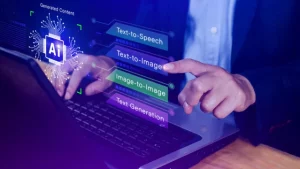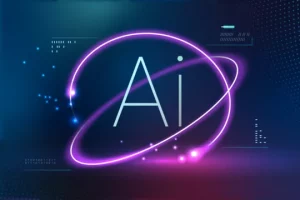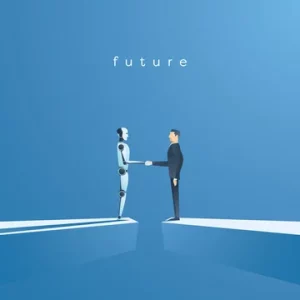 If you are on WhatsApp, you must have noticed the ubiquitous blue circle on the home screen. For the uninitiated, that is the icon of Meta’s latest integration of a generative Artificial Intelligence (AI) feature powered by Llama 3, a sophisticated Large Language Model (LLM). AI, in simple words, is like giving your computer a brain so that it can learn and make decisions on its own. LLMs, like ChatGPT, on the other hand, are a specific type of AI focused on understanding and generating human language. They are trained on a lot of text from the internet and books, so they can answer questions, write essays, translate languages, and converse with people. Think of it like a super-smart version of a text messaging app that can chat with you about almost anything! In essence, LLM is an AI model that is smart at understanding and using human language. In this feature, we explore how old AI is, some of its potential and the ethical issues associated.
If you are on WhatsApp, you must have noticed the ubiquitous blue circle on the home screen. For the uninitiated, that is the icon of Meta’s latest integration of a generative Artificial Intelligence (AI) feature powered by Llama 3, a sophisticated Large Language Model (LLM). AI, in simple words, is like giving your computer a brain so that it can learn and make decisions on its own. LLMs, like ChatGPT, on the other hand, are a specific type of AI focused on understanding and generating human language. They are trained on a lot of text from the internet and books, so they can answer questions, write essays, translate languages, and converse with people. Think of it like a super-smart version of a text messaging app that can chat with you about almost anything! In essence, LLM is an AI model that is smart at understanding and using human language. In this feature, we explore how old AI is, some of its potential and the ethical issues associated.
 The concept of AI, while now a modern marvel, traces its roots back to mid-20th-century speculative fiction and pioneering scientific thought. Early portrayals of science fiction have played a big part in familiarising the world with AI, be it the artificially intelligent robots like Maria in Metropolis (1927 film) to the “heartless” Tinman from The Wizard of Oz (1939 film) and more recent portrayals of humanoid robots with complex emotions. Bollywood went a step ahead with Chitti the Robot (2010) in the Rajinikanth-starring film and portrayed the robot (Chitti) with human-like emotions and the humanoid taking over its creator. What once seemed fantastical is now on the brink of reality, as evidenced by Meta’s AI chatbot beta testing image recognition techniques to detect human emotions. More fuel on that fire was added in 2021 when Google engineer Blake Lemoine claimed LaMDA, the chatbot he’d been testing, was sentient. Ultimately, this made it to the headlines and he got fired. Chat GPT and LaMDA, like large language models, are trained with a vast amount of text to imitate human responses (“Science” journal).
The concept of AI, while now a modern marvel, traces its roots back to mid-20th-century speculative fiction and pioneering scientific thought. Early portrayals of science fiction have played a big part in familiarising the world with AI, be it the artificially intelligent robots like Maria in Metropolis (1927 film) to the “heartless” Tinman from The Wizard of Oz (1939 film) and more recent portrayals of humanoid robots with complex emotions. Bollywood went a step ahead with Chitti the Robot (2010) in the Rajinikanth-starring film and portrayed the robot (Chitti) with human-like emotions and the humanoid taking over its creator. What once seemed fantastical is now on the brink of reality, as evidenced by Meta’s AI chatbot beta testing image recognition techniques to detect human emotions. More fuel on that fire was added in 2021 when Google engineer Blake Lemoine claimed LaMDA, the chatbot he’d been testing, was sentient. Ultimately, this made it to the headlines and he got fired. Chat GPT and LaMDA, like large language models, are trained with a vast amount of text to imitate human responses (“Science” journal).
 The theoretical foundations of AI were laid by Alan Turing, a British polymath in his seminal paper, “Computing Machinery and Intelligence,” published in 1950. He posed questions about the possibility of machines exhibiting human-like intelligence. Turing’s ideas looked utopian back then, coinciding with a period when computer leasing costs were exorbitant (Harvard Kenneth C. Griffin Graduate School of Arts and Science). Key milestones include the 1956 Dartmouth Conference, where Allen Newell, Cliff Shaw, and Herbert Simon conceptualised the Logic Theorist, one of the earliest AI programs designed to mimic human problem-solving skills. Many have called Logic Theorist the first AI program designed to mimic human skills (Popular Science). The problem with AI in the initial years of development was the issue with storing the information. Subsequent advancements in storage technology facilitated the evolution of AI, culminating in landmark developments like the ELIZA chatbot, an early natural language processing computer program developed from 1964 to 1967 by Joseph Weizenbaum at the Massachusetts Institute of Technology. Created to explore communication between humans and machines, ELIZA simulated conversation by using a pattern-matching and substitution methodology that gave users an illusion of understanding on the part of the program but had no representation that could be considered really understanding what was being said by either party (Harvard Gazette).
The theoretical foundations of AI were laid by Alan Turing, a British polymath in his seminal paper, “Computing Machinery and Intelligence,” published in 1950. He posed questions about the possibility of machines exhibiting human-like intelligence. Turing’s ideas looked utopian back then, coinciding with a period when computer leasing costs were exorbitant (Harvard Kenneth C. Griffin Graduate School of Arts and Science). Key milestones include the 1956 Dartmouth Conference, where Allen Newell, Cliff Shaw, and Herbert Simon conceptualised the Logic Theorist, one of the earliest AI programs designed to mimic human problem-solving skills. Many have called Logic Theorist the first AI program designed to mimic human skills (Popular Science). The problem with AI in the initial years of development was the issue with storing the information. Subsequent advancements in storage technology facilitated the evolution of AI, culminating in landmark developments like the ELIZA chatbot, an early natural language processing computer program developed from 1964 to 1967 by Joseph Weizenbaum at the Massachusetts Institute of Technology. Created to explore communication between humans and machines, ELIZA simulated conversation by using a pattern-matching and substitution methodology that gave users an illusion of understanding on the part of the program but had no representation that could be considered really understanding what was being said by either party (Harvard Gazette).
 From rudimentary beginnings with ELIZA to the animated paper clip known as one of the most annoying virtual assistants of all time, Clippy or Clippit (Microsoft Office Assistant). From Clippit to Copilot (a generative AI model), AI has evolved into sophisticated systems capable of enhancing numerous facets of human existence. In healthcare, AI revolutionises early disease detection, personalised treatment plans, accelerates drug discovery, and facilitates telemedicine. It empowers precision farming by monitoring crops, predicting yields, and optimising agricultural practices to minimise environmental impact. In education, AI-driven adaptive learning tailors educational content to individual student needs, while also ensuring academic integrity through plagiarism detection and performance prediction. Beyond these sectors, AI optimises supply chains, predicts market trends, and enhances customer service through AI-powered chatbots, thereby streamlining operations across industries and improving overall productivity. For example, if you want a vegan balanced diet plan to lose weight, you can now just ask ChatGPT to make you one and you can even ask it to suit the Indian palette and it will customise your plan.
From rudimentary beginnings with ELIZA to the animated paper clip known as one of the most annoying virtual assistants of all time, Clippy or Clippit (Microsoft Office Assistant). From Clippit to Copilot (a generative AI model), AI has evolved into sophisticated systems capable of enhancing numerous facets of human existence. In healthcare, AI revolutionises early disease detection, personalised treatment plans, accelerates drug discovery, and facilitates telemedicine. It empowers precision farming by monitoring crops, predicting yields, and optimising agricultural practices to minimise environmental impact. In education, AI-driven adaptive learning tailors educational content to individual student needs, while also ensuring academic integrity through plagiarism detection and performance prediction. Beyond these sectors, AI optimises supply chains, predicts market trends, and enhances customer service through AI-powered chatbots, thereby streamlining operations across industries and improving overall productivity. For example, if you want a vegan balanced diet plan to lose weight, you can now just ask ChatGPT to make you one and you can even ask it to suit the Indian palette and it will customise your plan.
The widespread integration of AI into everyday platforms underscores its transformative impact on user experience and operational efficiency. Meta’s AI integration across WhatsApp, Instagram, Messenger, and Facebook exemplifies this trend, offering users human-like interaction capabilities and personalised responses previously unimaginable.
Because of its human-like features, AI can become dangerous. Issues such as the dissemination of AI-generated misinformation and the creation of convincing deepfakes underscore the dual-edged sword of AI’s capabilities, necessitating robust regulatory frameworks and ethical guidelines to mitigate misuse and safeguard societal well-being. The last General Elections saw a race between parties with deep fake videos. People on the internet are familiar with songs being generated in the voice of the Prime Minister of the country.
In 2022, we got DALL-E 2 and Stable Diffusion, both text-to-image models that can turn a few words of text into a stunning image. Then Microsoft-backed OpenAI gave us ChatGPT, which can write essays so convincingly that it freaks out everyone from teachers, fearing students might cheat, to journalists, fearing it could replace them, to disinformation experts. Now we’ve got GPT-4 — not just the latest large language model, but a multimodal one that can respond to both text and images.
One of the foremost concerns surrounding AI is its potential to disrupt labour markets and exacerbate socioeconomic inequalities. AI’s proficiency in automating routine tasks across various industries raises valid concerns about job displacement, particularly in sectors reliant on manual labour or repetitive administrative roles. While proponents argue that AI can create new job opportunities and improve efficiency, historical parallels such as the Industrial Revolution caution against overlooking the societal impacts of rapid technological change. Addressing these concerns requires proactive measures to reskill the workforce, foster job creation in emerging AI-related fields, and ensure equitable distribution of economic benefits.
Marked by the global discourse on slowing the growth of AI, regulations have gained momentum, exemplified by the European Union AI Act, aimed at establishing the world’s first comprehensive regulatory framework for AI systems. This legislative initiative reflects the growing recognition of AI’s transformative potential and the imperative to balance innovation with ethical considerations. Despite efforts to regulate AI development, challenges persist in defining and enforcing ethical standards that promote AI’s responsible use while mitigating potential risks.
Looking ahead, the trajectory of AI development holds both promise and uncertainty. Advances in multimodal AI models like GPT-4, exemplify AI’s evolving sophistication and versatility. However, concerns about AI’s autonomous decision-making capabilities and its potential to surpass human cognitive abilities continue to fuel debates about the ethical implications of AI advancement. As AI technologies become increasingly integrated into daily life, fostering informed public discourse and proactive regulatory frameworks will be essential to navigate the complex intersection of technological innovation, ethics, and societal impact.
Experts are concerned over the potential dangers of AI and believe that it could outsmart humanity. We make fun of the fact that AI fails, but in reality, AI is so smart that within less than a week’s launch of Meta AI on WhatsApp, a Meta user, Mousumi Biswas, taught Meta AI the Bengali language just through conversations. In conclusion, AI represents a transformative force reshaping industries, enhancing human capabilities, and posing ethical challenges that demand thoughtful consideration and proactive regulation. From its origins in speculative fiction to its current integration into everyday platforms, AI’s journey underscores the dual imperatives of innovation and ethical responsibility in harnessing its full potential while safeguarding societal well-being.
– Jnanendra Das



